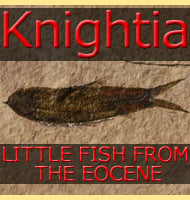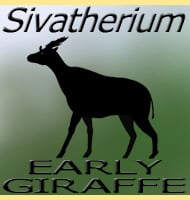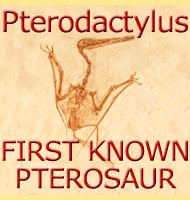In Depth
The larger an animal becomes in life, the more likely it is that it will only be represented by a few bones, and this is because the body is usually scattered by the actions of scavengers as well as environmental factors such as floods and wind storms long before the body can be buried and protected from such interference. This is almost certainly why the titanosaurine dinosaur genus Puertasaurus is so far known by only four vertebrae. However, these vertebrae are of an exceptionally large size, even for a titanosaur, with one of the dorsal vertebrae measuring one hundred and six centimetres tall and one hundred and sixty-eight centimetres wide. These measurements mean that this vertebra is the broadest titanosaur vertebra discovered, and by itself reveals that Puertasaurus was of exceptional size.
Unfortunately, because only four vertebrae are known, the only thing that researchers can do when estimated the size is make a best guess by comparing the few vertebrae of Puertasaurus and comparing them to other titanosaurs. The original describers of Puertasaurus estimated the total length of Puertasaurus to fall somewhere between thirty-five and forty meters in length, though in 2010 Gregory S. Paul considered Puertasaurus to be about thirty metres long. It is uncertain if Puertasaurus was one of the longest titanosaurs, though the genus does seem to be roughly comparable to the more famous Argentinosaurus in terms of length. The size of the dorsal vertebrae however clearly indicates the presence of a far more massive rib cage than that speculated for Argentinosaurus. This means that even if Puertasaurus was not as long as Argentinosaurus, it was certainly wider, and by extension most probably much heavier than Argentinosaurus. But again, because Puertasaurus is so far only known from a few vertebrae, it is impossible to be certain about the body weight, though Novas er al did speculate a range of eighty-eight to one hindered metric tons in the 2005 description of Puertasaurus.
Going beyond size the vertebrae of Puertasaurus seem to be most similar to the titanosaurs of the Lognkosauria. This in itself means that Puertasaurus is related to genera such as Futalognkosaurus and Mendozasaurus amongst others. Titanosaurs of the Lognkosauria have a unique form to their cervical vertebrae which in life may have allowed their necks to perform feats of flexibility that were simply beyond the ability of other titanosaurs. This flexibility may have allowed an individual Puertasaurus to feed from a much greater range of plants without actually having to expend so much energy walking, meaning more calories could go to growth and then maintaining the large body size.
Before the description of Puertasaurus, all of the other lognkosaurian titanosaurs at the time were only known from either Turonian or Coniacian fossil deposits, suggesting that the lognkosaurian titanosaurs were only prevalent in the earlier stages of the Late Cretaceous. The Puertasaurus holotype fossils however were recovered from early Maastrichtian deposits, revealing two things: the lognkosaurian titanosaurs possibly existed all the way to the end of the Cretaceous era, and that Puertasaurus was possibly amongst the last lognkosaurian titanosaurs to live, an existence that might have only been cut short by the KT extinction just a few million years later.
Puertasaurus was named after Pablo Puerta, while the type species P. reuili was named after Santiago Reuil. These were the two people who discovered the first Puertasaurus fossils in Patagonia back in 2001.
Further Reading
- Giant titanosaur (Dinosauria, Sauropoda) from the Late Cretaceous of Patagonia. Revista del Museo Argentino de Ciencias Naturales, nuevo serie 7(1):37-41. - F. E. Novas, L. Salgado, J. O. Calvo & F. L. Agnol�n - 2005. - The Princeton Field Guide to Dinosaurs. - Gregory S. Paul - Princeton University Press. 2010.









